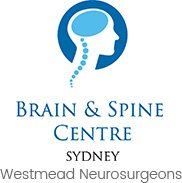Hemifacial Spasm
Hemifacial spasm is a condition characterized by uncontrolled twitching of muscles on one side of the face caused by compression or irritation of the facial nerve. The affected facial nerve then sends abnormal signals to the muscles it supplies causing them to twitch or contract.
Facial nerve compression may occur due to a blood vessel, a structural abnormality, a tumour or a cyst. Sometimes, the cause is not clear and is termed idiopathic. Hemifacial spasm can affect anyone but is usually seen in women over the age of 40.
The twitching or spasms are confined to one side, mostly the left. It usually begins in the eyelid, but may also occur in the cheek and around the mouth. As the condition progresses, the spasms become more pronounced and can cause closure of the eyelid as well as eye tearing. It can later involve all the muscles on one side of the face and even the neck affecting one’s activities and quality of life.
The American Spine Center offers innovative non-surgical treatment for neuromuscular disorders such as hemifacial spasm. To reduce the symptoms your doctor may recommend limiting caffeine and increasing intake of foods containing vitamin D and magnesium. Chamomille and blueberries may also help. Muscle relaxing medications can be prescribed but are typically not very effective. The most effective non-surgical treatment so far with the least side effects is injections of botulinum toxin type A or Botox. This chemical produced by bacteria weakens the muscles and can diminish spasms for 3-6 months. Fine needles are used to inject the Botox into the affected muscles within the eyelids, around the mouth, cheek and jaw. Your doctor uses a specific dose for each muscle and carefully injects into specific locations to target the exact muscles and avoid complications. Side effects may include pain, redness, swelling and eyelid ptosis (drooping), which is usually transient. The effects of treatment can be experienced after a few days. You can appreciate the full effect in 2 weeks. Injections may be repeated every 4-6 months.
Botox shows a success rate of 95% in the treatment of hemifacial spasms and has helped many people return to a better quality of life.




